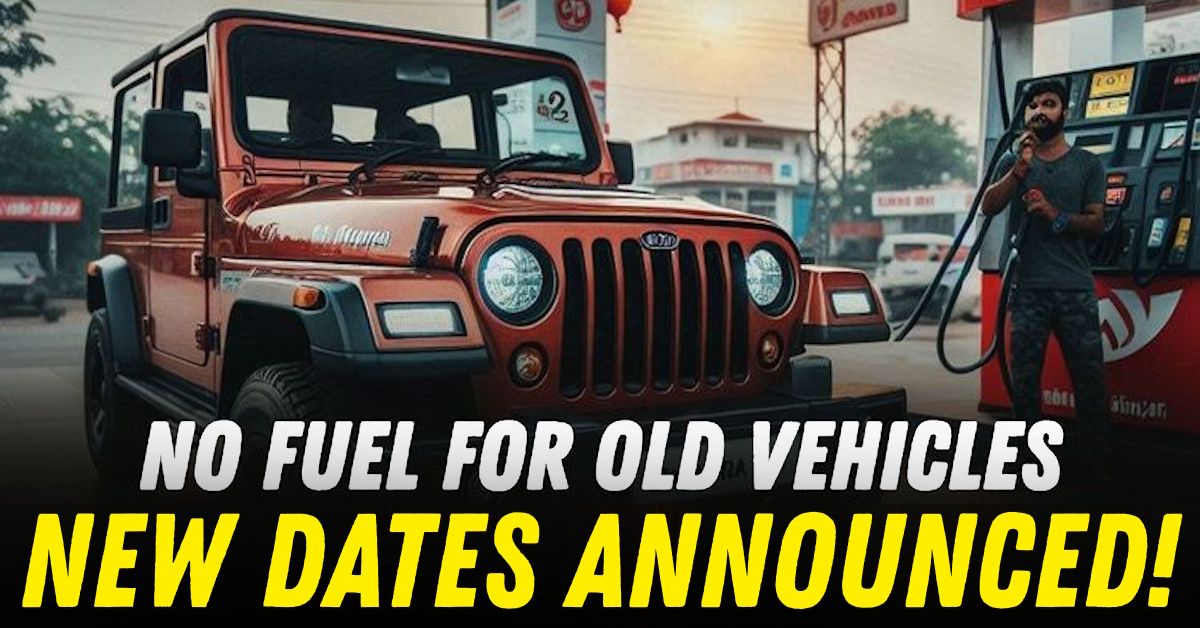Fuel Ban For End-Of-Life Vehicles Coming Back: Govt Announces New Dates!


After being paused following a massive public outrage, Delhi NCR's fuel ban for end-of-life (EOL) vehicles now has new dates for coming into effect. The Commission for Air Quality Management (CAQM) has now announced that end-of-life (EOL) vehicles will be denied fuel starting November 1, 2025.
Upon its return, the fuel ban will initially apply to old EOL vehicles in Delhi and five high-density areas of Gurugram, Faridabad, Ghaziabad, Gautam Budh Nagar and Sonipat. It will apply to the rest of the National Capital Region (NCR) starting April 1, 2026.
The government intends to curb Delhi NCR's vehicular pollution by implementing the fuel ban. According to the new policy, petrol vehicles that are atleast 15 years old, and diesel vehicles which are atleast 10 years old will not be allowed to refuel. Special cameras were installed at fuel stations to scan and analyse vehicle number plates and check their ages using data from the VAHAN portal.
Delhi implemented the new rule on July 1, 2025, sparking instant public outrage. It was known to affect over 6.2 million vehicles. In a few days, we came across many instances of angry public voicing their concerns. In addition to public outrage, technical hiccups and legal challenges also led to a complete failure of the 'ban plan', eventually pushing the government to roll back the ban.
The ban was absolutely unjust to middle-class families relying on old vehicles for their daily needs. Many including the Delhi Environment Minister have pointed this out so far.
But it turns out the city and the National Capital Region are determined to bring ban back. Scheduling it for November has generated enough time for the authorities to analyse the policies in detail and rework if necessary.
Furthermore, it will give authorities enough time to install Automatic Number Plate Recognition (ANPR) systems at all fuel stations. Setting these up in five nearby districts is expected to complete by the end of October this year.
Many of these ANPR cameras that have already been set up, developed glitches previously. They faced difficulties in recognizing and tracking vehicles without High-Security Registration Plates (HSRP). The authorities now have enough time to get these fixed. The period will also be utilized to train manpower properly.
The Delhi government will likely revise its policies too. It could make changes in a way that instead of banning all old cars, only polluting ones could be removed. In that case, well-maintained old vehicles will be allowed to continue on our roads. At the time of writing this article, we lack clarity on this front.
As clear from Delhi's failed fuel ban, it is difficult to fulfil environmental goals without compromising practicality and affecting people's life at large. The move definitely got the public upset. But people soon found interesting workarounds.
Initially, the ban was implemented in Delhi alone. People started driving to neighbouring cities like Gurugram and Noida to fill up. These cities were initially supposed to have the ban implemented at a later stage.
The officials in Delhi were aggressive with the implementation of the ban initially. On the first day itself, as many as 80 vehicles were impounded, without being given a chance to appeal. If a violation is identified by the ANPR camera system, the fuel station staff will be notified to not deliver fuel to the vehicle, and another notification will be sent to enforcement agencies who may then take severe action against these vehicles.